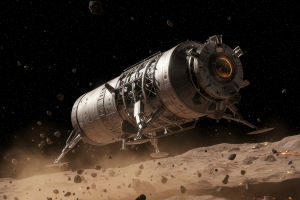The moons of the Solar System are far more than mere companions orbiting planets, they are worlds unto themselves, each harboring distinct characteristics, histories, and mysteries.
Ranging from volcanic infernos to icy ocean worlds, these moons reveal complex geological processes and potential environments for life beyond Earth.
Diversity Beyond Size and Orbit
The Solar System houses over 200 known moons, with the largest orbiting the giant planets—Jupiter, Saturn, Uranus, and Neptune—and a few notable ones circling terrestrial planets like Earth and Mars. Size alone does not capture their diversity. For example, Jupiter’s Ganymede is the largest moon in the system, even larger than Mercury, while tiny irregular moons may be captured asteroids with eccentric, tilted orbits.
Structural composition ranges extensively: some moons possess dense, rocky crusts with active volcanism, while others are dominated by thick layers of ice over potential subsurface oceans. Titan, Saturn’s largest moon, stands out with a dense nitrogen-rich atmosphere and liquid hydrocarbon lakes, resembling a frigid version of Earth’s early environment.
Geological Wonders and Activity
Certain moons defy expectations of dead, inert bodies. Io, one of Jupiter’s Galilean moons, ranks as the most volcanically active place known in the Solar System. Its intense volcanic activity, fueled by tidal heating from gravitational interaction with Jupiter and neighboring moons, resurfaces Io with sulfurous plumes and lava flows, creating an ever-changing landscape rich in exotic chemical compounds.
Europa, also orbiting Jupiter, intrigues scientists because beneath its icy crust may lie a global ocean kept liquid by tidal flexing. This possibility makes Europa a prime candidate in the search for extraterrestrial life. Evidence from instruments aboard missions like Galileo points to a relatively young, cracked ice surface and geologic activity suggesting material exchange between the ocean and surface.
Moons With Atmospheres and Climate Systems
Unlike most moons, Titan possesses a substantial atmosphere and a complex climate system. Its dense, orange-tinged atmosphere contains hydrocarbons that create weather patterns, including methane rains and seasonal changes. The surface lakes and seas of liquid methane and ethane make Titan a unique laboratory for studying prebiotic chemistry in an alien environment.
Origins and Evolution of Moons
The origins of moons vary significantly. Some, like Earth’s Moon, likely formed from giant impacts—collisions between the young Earth and a Mars-sized body that ejected debris into orbit, coalescing into the Moon. Others, such as the irregular satellites of the gas giants, are probably captured objects, while some regular satellites formed from disks of material orbiting planets, akin to miniature solar systems.
Over billions of years, tidal forces between moons and their planets have altered rotational and orbital dynamics. For example, Earth's Moon is tidally locked, always showing the same face to the planet. This feature influences tidal patterns and potentially stabilizes Earth’s axial tilt, which can affect long-term climate stability.
Astronomer Dr. Carolyn Porco, known for her leadership of the Cassini Imaging Science Team, emphasizes the moons’ dynamic nature: “Far from being static rocks circling their planets, many moons are active worlds with geology, atmospheres, and potential habitats, challenging our understanding of what it means to be a planetary body".
Both experts’ insights are documented through numerous public talks and peer-reviewed research illustrating the pivotal role moons play in planetary science.
The Role of Moons in the Solar System’s Future Exploration
Interest in moons extends beyond academic curiosity to space exploration agendas. Missions like NASA’s Europa Clipper and ESA’s JUICE (Jupiter Icy Moons Explorer) aim to study the icy moons’ environments up close, in pursuit of signs of habitability. Meanwhile, future landers on Titan could probe its methane lakes and organic chemistry.
Solar System moons reveal astonishing variety and complexity, from geological activity and atmospheres to potential alien oceans hidden beneath icy shells. Their origins, shaped by collisions, capture, and accretion, narrate chapters of cosmic history.
As natural satellites, moons not only influence their parent planets but also serve as compelling destinations in humanity’s quest to comprehend the universe and the tantalizing possibility of life beyond Earth. The ongoing exploration of these celestial companions promises to unlock deeper secrets, enriching understanding of planetary systems throughout the cosmos.


